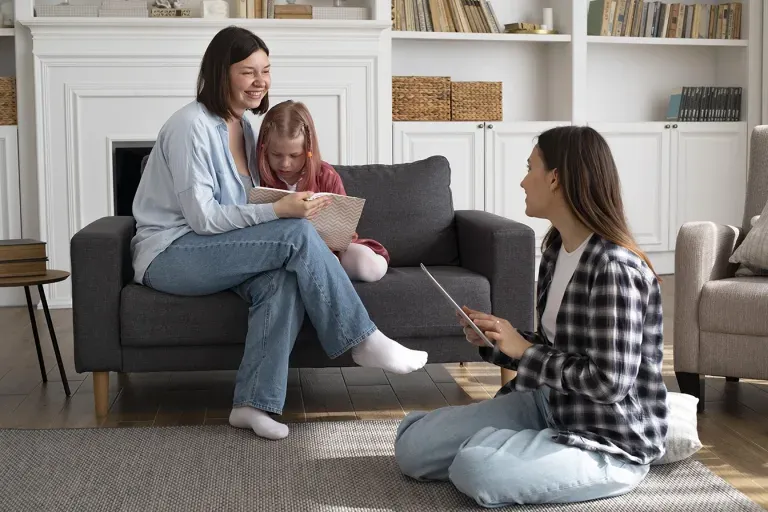
Creating a strong partnership with your child’s ABA therapist can make a significant difference in your child’s progress. When parents and therapists work as a team, therapy becomes more effective, personalized, and supportive for your child’s unique needs.
In this article, we’ll walk you through how to build a positive, collaborative relationship with your child’s ABA therapist. You’ll learn communication tips, role clarity, and what healthy collaboration looks like in action.
Applied Behavior Analysis (ABA) is most effective when it is not limited to therapy sessions but integrated into your child’s daily life. That’s where your role as a parent becomes essential.
Therapists bring clinical expertise and proven strategies. Parents bring deep, everyday insight into their child’s personality, preferences, and routines. Together, you can create a care plan that is practical and consistent across all settings.
Benefits of collaboration include:
To build a strong working relationship, it helps to understand your therapist’s responsibilities and boundaries.
Your ABA therapist is responsible for:
Their goal is not to judge parenting decisions but to provide tools, insight, and support.
Consistent and respectful communication builds trust and ensures everyone is on the same page.
ABA therapy works best when it extends beyond sessions. Your therapist can show you how to support skill development at home through coaching, modeling, or visuals.
You do not need to be perfect. Showing up, practicing, and staying consistent makes a big difference.
You know your child better than anyone. If something feels ineffective, speak up. At the same time, invite your therapist’s perspective and ask for strategies that might help.
This two-way exchange helps create flexible and personalized plans.
While your therapist uses formal assessments to develop goals, your input is essential. Make sure the treatment plan reflects your family’s priorities, whether that means building independence, improving communication, or managing challenging behaviors.
Progress in ABA can take time and may not always be linear. By keeping in touch with your therapist and recognizing small milestones, you’ll help build motivation and confidence for everyone involved.
Let’s look at a real-world example:
A parent notices more tantrums during daily transitions at home. They let the ABA therapist know. The therapist shares a visual schedule strategy being used in sessions. The parent begins using the same visuals at home. Over time, the child transitions more smoothly, and both the parent and therapist adjust the visuals based on ongoing observations.
This kind of teamwork supports consistent learning and builds momentum.
You do not need a background in behavior analysis to make a big impact. By building a collaborative relationship with your child’s ABA therapist, you become an essential part of your child’s support team.
Your insights, consistency, and open communication help your child apply what they learn in therapy to everyday life. You are your child’s biggest advocate, and your partnership with their therapist plays a key role in their long-term growth.
Remember, you can always reach out to your Kiwi Kids ABA therapist with questions, concerns, or updates. We are here to support you and your child’s growth and learning every step of the way.
Our team of experienced therapists is dedicated to helping children with autism and other developmental disabilities reach their full potential. We are committed to creating a supportive and nurturing environment where every child can thrive.
Contact us today to learn more about our services and how we can support your child's development.